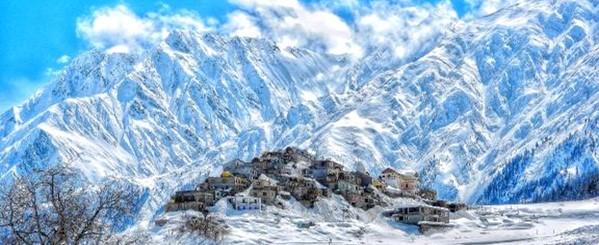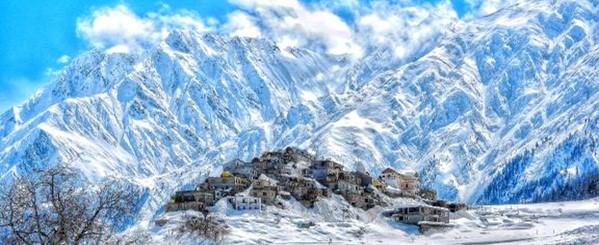
I come from a tribal area in the northern part of India, but I grew up in a town that was about a hundred kilometres away. Throughout my life, I had heard and read about the difficulties people face in accessing healthcare services in my tribal region which increased during the winter season due to heavy snowfall, which often results in it being isolated from the rest of the country. As a result, people had to travel long distances to seek medical assistance. So, I always pictured myself becoming a doctor and serving my tribal community. Though when I began my medical studies, I came to the realization that inaccessibility to healthcare has been the story of most tribal communities in the country. Moreover, I became aware of how difficult the decision to go back would be.
India has over 104 million people belonging to Scheduled tribes (ST) (Census 2011). The term ‘Scheduled Tribes’ first appeared in the Constitution of India (Article 366 (25)) and allows to define populations with specific traits and cultures, limited contact with the wider communities/population, and which have achieved lower levels of progress (economic, development etc) than the larger community. Scheduled tribes in India account for more than one-third of the world’s tribal and indigenous populations. Most tribal communities are socio-economically and geographically marginalized – dispersed across remote hilly, desert, or forest regions. They demonstrate poor health outcomes, including high maternal and infant mortality rates, malnutrition, and bear the double burden of infectious diseases like tuberculosis, malaria and noncommunicable diseases.
An already low-resourced health system exacerbates the issues of exclusion which many tribal and other vulnerable populations face. Geographical remoteness and harsh terrains make accessing health facilities a challenge. Health workforce shortages are worse in remote areas often rendering existing health facilities non-functional. For example, the state of Himachal Pradesh showed a 77 % shortfall of nurses according to a report by the Expert Committee on tribal health. Thirty three percent of posts for doctors in primary health centres are vacant, and 84% posts for specialist doctors in community health centres in the tribal regions remained vacant. Poor public health infrastructure, financial renumeration, and non-financial incentives (education for children, opportunities for professional engagement or advancement, social isolation, etc), contribute to a hesitancy in medical practitioners to serve in remote and rural areas. Poor health infrastructure implies doctors are often compelled to refer patients to higher level centres.
The government has tried to address these challenges with strategies to attract doctors to work in tribal areas, such as an additional salary, but the meagre financial incentives (in some states) meant the strategies were not as effective as intended. Some states attracted doctors by offering additional marks for the entrance exam for specialization during postgraduate entrance exams for each year of service in the tribal areas. These strategies however are unable to effectively attract and retain health workers in rural and remote areas for long.
India has a reservation policy (i.e. affirmative action in which a few positions are earmarked for those from vulnerable populations) where a fixed number of seats are reserved in government jobs and educational systems for the weaker sections of the society including the STs. This was done to ensure fair representation and empowerment of the socially and educationally marginalized. In 2007–2008, the government introduced a 7.5% reservation for seats in medical colleges too. Such affirmative action policies aim to fill the gaps in inequities faced by marginalised communities, yet the overall development of tribal communities remains a distant dream. Despite their desire to serve their community, doctors and other health workers are restricted by health system challenges.
Over the last 7 decades since India’s independence, there were opportunities and attempts to improve the lives of tribal communities, yet the tribal populations continue to demonstrate poorer health and development indicators. The communities often lack basic health facilities, education, transportation, power, internet, and other services, and the future remains bleak. In 2018, an expert committee published a report on tribal health to address the challenges and the need for a dedicated tribal health policy. The committee advised that MBBS (i.e. Bachelor of Medicine and Bachelor of Surgery) doctors who are willing to reside in tribal regions be given training and diplomas to provide speciality care such as emergency obstetric care, new-born care, and pediatric care since they have a significant shortage for specialists. Furthermore, substantial financial and non-financial incentives can be provided to increase the retention of these doctors, who are less likely to move to urban areas for potentially more lucrative opportunities. There may be opportunities to organise good quality medical and surgical camps by specialists to fill in gaps in access to specialist health services.
The question remains, though, whether the government will prioritize tribal health and its overall development or whether it is time for scheduled tribe doctors to put up with the subpar facilities and return to serve their communities. Put differently, will individual actions such as these benefit the community, or will the structural disparities in health and development remain, relegating marginalised communities to underdeveloped and weaker segments of society?
The Sustainable Development Goals (SDGs) are based on the principle of “leaving no one behind.” The SDGs won’t be attained if the poorest and most marginalized people remain left behind. So, I expect that soon the government will prioritize the tribal areas, support the community, and improve their healthcare system. That would, among others, also imply that five years from now, when someone asks me where I am, I’ll be able to respond “back home, helping my community,” without feeling like I’ve had to make a compromise.

Village in tribal region of District Lahaul & Spiti, Himachal Pradesh, India. (Photo: Amir Jaspa)
Sooo Gud to see someone addressed the problem where no one tries to address it as far as I know …..Actually I visited ur blog to ask for guidance about community health administration and its scope… but ended up found someone with likeminded person…. Hoping the vision of urs be fulfilled.Each and every person may get the quality health care services… hope it would happen soon
Surely down the line in 5 years things would change for better.
I Hope everyone in India gets the basic healthcare that they deserve.